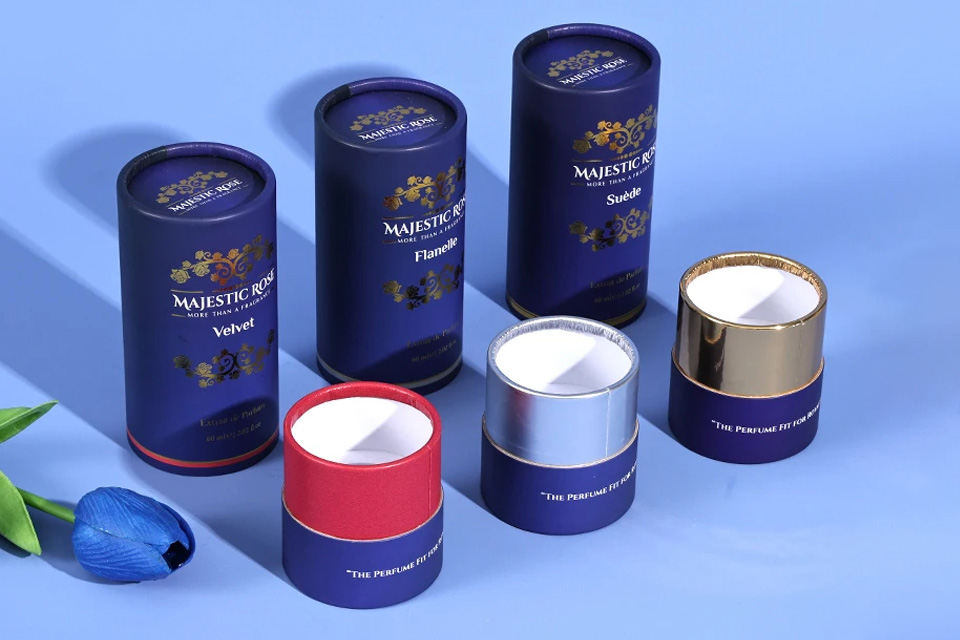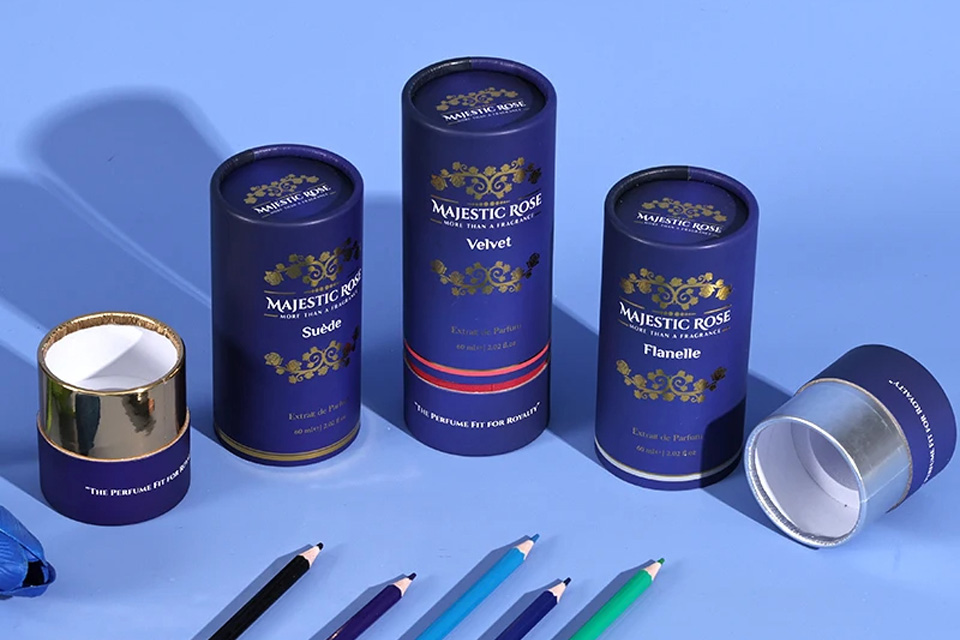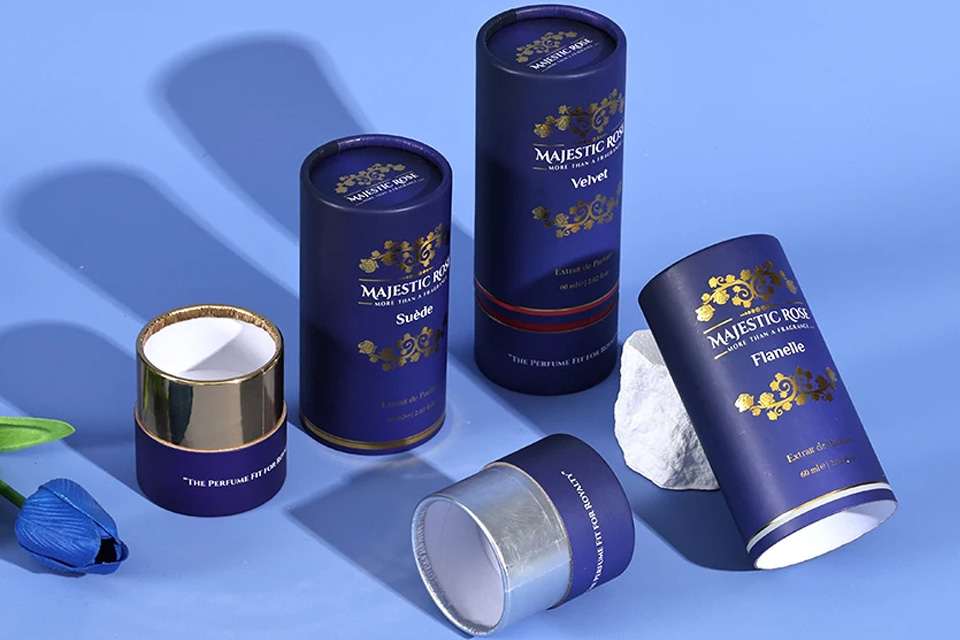Material Revolution of Cylindrical Packaging: Decoding the Technological Code and Aesthetic Expression of Modern Packaging Boxes
Abstract
Driven by consumption upgrades and environmental protection policies, the material innovation of cylindrical packaging boxes is setting off a silent revolution. This article focuses on five core systems: paper-based composite materials, engineering plastics, metal alloys, bio-based materials and smart materials. Combining data from the International Packaging Association and industry benchmark cases, it reveals how different materials can break through physical properties and express aesthetics to reshape the value chain and user experience of the packaging industry.
1. Environmental Breakthrough of Paper-Based Composite Materials
Driven by the global "paper instead of plastic" policy, paper-based materials have achieved a leap from traditional corrugated paper to functional composite materials. Micro-corrugated paperboard has an orthogonal corrugation arrangement, and its longitudinal load-bearing capacity is 3.2 times that of traditional cubic packaging, and has been successfully used in food can transportation (such as the 8-layer stacking solution of Lay's potato chip tubes). The tensile strength of nanocellulose reinforced paper exceeds 58MPa, and the moisture-proof grade reaches IPX4 standard with beeswax coating technology, making it the first choice for packaging of moisture-prone foods such as tea and coffee.
Environmental innovation extends to the field of functional coatings:
- The conductive carbon fiber coated paper tube developed by Prince Paper in Japan has a surface resistance value stable in the range of 10^6-10^8Ω, which builds a natural anti-static barrier for electronic components
- The photocatalyst coated paper tube developed by Mitsubishi can decompose organic pollutants under LED light sources, reducing the total number of colonies in fresh food packaging by 76%
According to data from the China Circular Economy Association, the market share of degradable paper-based packaging will reach 45% in 2025, and the carbon emissions in the life cycle will be reduced by 76% compared with traditional plastics.
2. Precision evolution of engineering plastics
PET material is rewriting the display logic of high-end products with its 92% light transmittance and glass-like texture. Transparent PET cylindrical boxes are widely used in food fields such as nuts and scented tea. Its oil resistance, acid and alkali resistance can withstand a temperature range of -70℃ to 120℃, perfectly adapting to the needs of cold chain logistics. What is more noteworthy is the innovative application of PETG materials:
- The impact strength is 35 times that of ordinary films, and the drop test shows that the breakage rate is reduced by 62%
- The mirror effect is achieved with vacuum coating technology, making the hardness of cosmetic packaging reach 4H pencil-level scratch resistance standard
In terms of functional breakthroughs, EPP (expanded polypropylene) has increased the impact force dispersion efficiency to 87% with its honeycomb closed-cell structure, becoming the core material for precision instrument transportation packaging.
3. Structural aesthetics of metal alloys
Metal materials continue to gain momentum in the high-end market:
- Anodized aluminum uses a 0.01mm diamond cutting process to give wine packaging a "liquid metal" texture, with a fracture toughness 3.2 times that of traditional aluminum alloys
- Tinplate cylinders use food-grade tin plating technology, which increases antioxidant properties by 5 times, making them a classic choice for high-end tea and chocolate (such as Godiva's Valentine's Day limited packaging)
Breakthroughs in surface treatment technology bring new ways of expression. Magnetron sputtering coating technology allows the area with a curvature radius of ≤5mm to maintain a color accuracy of ΔE≤1.5, successfully solidifying brand colors such as "Tiffany Blue" as consumer mental labels.
4. Closed-loop practice of bio-based materials
Driven by the EU "Packaging Waste Regulation", bio-based materials have made breakthrough progress:
- Mycelium foam has been verified in the laboratory to be naturally degraded in 28 days while providing cushioning performance equivalent to EPS. Its mycelium network self-repairing properties increase the compressive strength by 23%
- The flexural modulus of bamboo fiber composite materials reaches 8.5GPa, and the carbon footprint is 76% lower than that of traditional plastics. It has been applied to the field of skin care product packaging (such as Fresh Ancient Source Repair Series)
The construction of a circular system has become a competitive barrier. Chopard launched the "Packaging is Points" plan, where users can return bamboo fiber cylinders to exchange for product discounts, making the material reuse rate reach 8 times.
5. Interactive Revolution of Smart Materials
IoT technology promotes the evolution of packaging materials to "sense-response" type:
- NFC chip-embedded paper tubes can display product traceability information by touching the mobile phone. Zhou Dasheng applied this technology to increase the customer unit price by 560 yuan
- Temperature-variable ink shines in the field of cold chain logistics. When the internal temperature exceeds the threshold, a warning pattern appears on the packaging surface with an accuracy rate of 99.3%
MIT laboratory's 4D printed shape memory polymer is more subversive. When it comes into contact with water, it can autonomously transform into a display stand, extending the packaging life cycle by 300%, creating a new "packaging as a service" model.
Summary
From the molecular-level innovation of nanocellulose reinforced paper to the morphological revolution of 4D printed smart materials, the material evolution of cylindrical packaging is reshaping consumer experience and industry standards. In the future, with the development of biosynthesis technology and quantum materials, packaging will evolve into an organic life form that can perceive the environment, self-power, and infinitely cycle. In this material revolution, the optimization of each molecular structure is writing a new business legend.
 English
English Español
Español Português
Português Pусский
Pусский Français
Français Deutsch
Deutsch 日本語
日本語 한국어
한국어 Italiano
Italiano عربى
عربى


